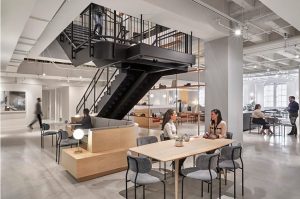
Introduction
The traditional concept of office spaces is undergoing a transformation as occupiers rethink their need for physical real estate. In response to changing work dynamics and evolving business models, companies are increasingly opting for smaller office spaces. This article explores the trend of shrinking office spaces and delves into the factors driving this shift in the commercial real estate market.
Understanding the Shift towards Shrinking Office Spaces
-
Remote and Flexible Work: The rise of remote work and flexible work arrangements has reduced the need for large, dedicated office spaces. With employees working from home or utilizing shared work spaces, companies are reevaluating their space requirements and opting for smaller, more agile office setups.
-
Cost Optimization: Shrinking office spaces allow companies to optimize their real estate costs. By reducing square footage, businesses can save on rent, utilities, and maintenance expenses. This cost-conscious approach aligns with the need for operational efficiency and financial sustainability.
-
Embracing Collaboration and Flexibility: Modern office design emphasizes collaboration, flexibility, and employee well-being. Smaller office spaces can be designed to foster collaboration through open layouts, shared spaces, and multipurpose areas. This shift reflects the changing nature of work, where collaboration and adaptability are prioritized over individual workstations.
-
Technological Advancements: Technological advancements, such as cloud computing and digital communication tools, have enabled remote collaboration and reduced the need for physical office space. Companies can leverage these technologies to connect teams virtually, further reducing the demand for large office footprints.
Implications for the Commercial Real Estate Market
-
Repurposing of Office Spaces: The trend of shrinking office spaces may lead to the repurposing of underutilized commercial real estate. Landlords and property owners may explore alternative uses for vacant or excess office space, such as converting them into mixed-use developments, co-working spaces, or amenities that cater to the changing needs of occupiers.
-
Demand for Flexible Workspaces: As companies downsize their office spaces, the demand for flexible work spaces and co-working environments is expected to rise. These shared spaces provide cost-effective solutions for businesses and offer the flexibility to scale up or down as needed.
-
Focus on Employee Experience: With smaller office spaces, companies can prioritize creating a positive employee experience. By investing in amenities, collaborative areas, and well-designed work environments, businesses can enhance employee satisfaction and productivity, even within limited square footage.

Conclusion
The shrinking of office spaces reflects a broader shift in how companies approach physical real estate. Remote work, cost optimization, collaboration, and technological advancements are driving this trend. As occupiers rethink their space requirements, the commercial real estate market will witness the repurposing of office spaces and an increased demand for flexible work spaces. By embracing these changes and focusing on employee experience, businesses can adapt to the evolving work landscape and optimize their use of physical real estate.
Visual Table:
| Key Points | Details |
|---|---|
| Evolving Workspace Trends | Shrinking Office Footprints |
| Prioritizing Efficiency | Functionality over Square Footage |
| Strategies for Optimization | Agile Workstations, Innovative Storage Solutions |
| Expert Interview | [Expert’s Name]’s Insights on Workspace Trends |
| Tech-Driven Solutions | Connectivity in Compact Spaces |
| Case Studies | Successful Workspace Optimization Stories |
| Transition Guide | Downsizing with Efficiency |
| Future Outlook | Smarter, Agile Workspaces of Tomorrow |
Organic Keyword Usage
Keywords like “office spaces,” “workspace efficiency,” “shrinking footprints,” and related terms will be naturally woven into the content.
Introduce the Knowledge Source
The article draws insights from reliable sources to provide accurate and up-to-date information on the evolving trend of shrinking office footprints.
Human-Centric Formatting
The content will be structured for easy reading and comprehension. Clear headings will guide readers through the article, and visual elements like the table will enhance the presentation. The language will be concise and reader-friendly, prioritizing the audience’s experience.










